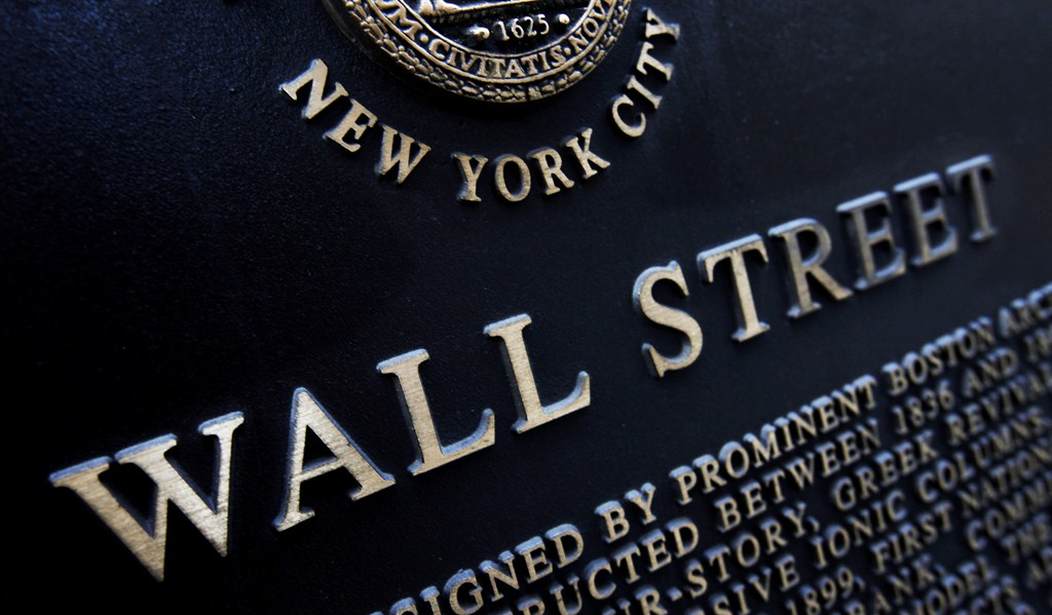Stocks sold off sharply Thursday. Finally, the much anticipated correction is happening, but I don’t see any fundamental reason for the decline. It’s purely a technical correction.
Real gross domestic product (GDP) rose in the second quarter at a 4% annualized rate as a sharp improvement from the negative GDP announced in the first quarter.
The latest growth number was no surprise to Joel Stern, an adjunct finance professor at several universities and a perennial speaker at the FreedomFest conference that I chair each July in Las Vegas. Stern predicted 4% annual U.S. GDP growth this year, despite the government’s report that GDP shrank in the first quarter.
As a champion of the federal government’s decision to begin reporting the Gross Output (GO) statistic on a quarterly basis earlier this year, I consider the latest variation of the GDP reading from the first quarter to the second quarter as evidence of the value of having an alternative indicator for economic growth. The GO statistic includes business-to-business commerce, so it is a broader indicator than GDP, which excludes such activity.
Specifically, U.S. real GDP – the output of goods and services produced by labor and property located in the United States – rose at an annual rate of 4% in the second quarter, compared to a downwardly revised first quarter contraction of 2.1%, according to the Bureau of Labor Statistics.
Gross Output, a broader measure of economic growth, has shown that the economy is not as bad off as GDP figures initially suggested. GO for the first quarter, in real terms (after taking into price inflation into account), only declined slightly by 0.1%, compared to the 2.1% drop in GDP. The second-quarter GO will not be announced until November, but I will be curious to see it if deviates from GDP, as it did in the first quarter.
Recommended
As Steve Landefeld, former director of the BEA, and co-editors Dale Jorgenson and William Nordhaus state in their book, “A New Architecture for the U.S. National Accounts” (University of Chicago Press, 2006), “Gross output [GO] is the natural measure of the production sector, while net output [GDP] is appropriate as a measure of welfare. Both are required in a complete system of accounts.”
Gross Output and GDP are complementary aspects of the economy. But GO does a better job of measuring total economic activity and demonstrates that business spending is holding up well and is more significant than consumer spending.
Furthermore, by using GO data, we see that consumer spending is actually less than 40% of economic activity, not the 70% figure that is often reported by the media.
GDP leaves out a big part of the economy by not including business-to-business (B-to-B) transactions. According to my calculations, B-to-B rose a nominal 1% to $20,522 billion in the first quarter 2014. That’s good news for the economy and the stock market.
To read further about the value of GO, check out my op-ed in the Wall Street Journal posted on April 23, with the headline, “At Last, a Better Economic Measure.”
You Blew it! America’s Richest Families: What Happened to the Vanderbilts?
“The father buys, the son builds, the grandson sells, and his son begs.” — Old English proverb (quoted in “Maxims of Wall Street” — to order, call Eagle Financial Publications at 1-800-211-7661, and mention code MAXIMH)
The July 21 issue of Forbes has a cover story on “America’s 100 Richest Families.” The list includes the old dynasties like the Rockefellers, Du Ponts and the Kennedys, as well as relatively nouveau riche like the Waltons, the Hunts and the Kochs.
But conspicuously absent from the list was the Vanderbilts. Cornelius “Commodore” Vanderbilt (1794-1877) became one of the wealthiest men in history thanks to the booming railroad business. He was worth an estimated $100 million by the time he died, more than was held in the U.S. Treasury at the time.
But by the time the third generation came along, the grandchildren have more interest in spending money than making it. William Vanderbilt spent time on his yachts and thoroughbred horses, while his brother George Vanderbilt spent enormous sums keeping up the famed 146,000 acre Biltmore estate in the Blue Ridge Mountains of North Carolina. The Gilded Age required huge spending on art collections and a string of properties including The Breakers, along with 10 mansions on Fifth Avenue in Manhattan.
The third generation of Vanderbilts also gave away millions to Columbia University, the YMCA and Vanderbilt University.
The fourth generation saw Reginald “Reggie” Claypool Vanderbilt and Cornelius “Neily” Vanderbilt III come around, spending vast sums to maintain a high society appearance. Reggie become an avid gambler and playboy.
By the time socialite and heiress Gloria Vanderbilt and her sons Anderson Cooper (of CNN fame) and Carter Vanderbilt Cooper came around, there wasn’t much left.
The founder Commodore Vanderbilt said it best, “Any fool can make a fortune; it takes a man of brains to hold onto it.”
In case you missed it, I encourage you to read my e-letter column from last week about whether President Obama has aided the stock market’s rise.
























Join the conversation as a VIP Member